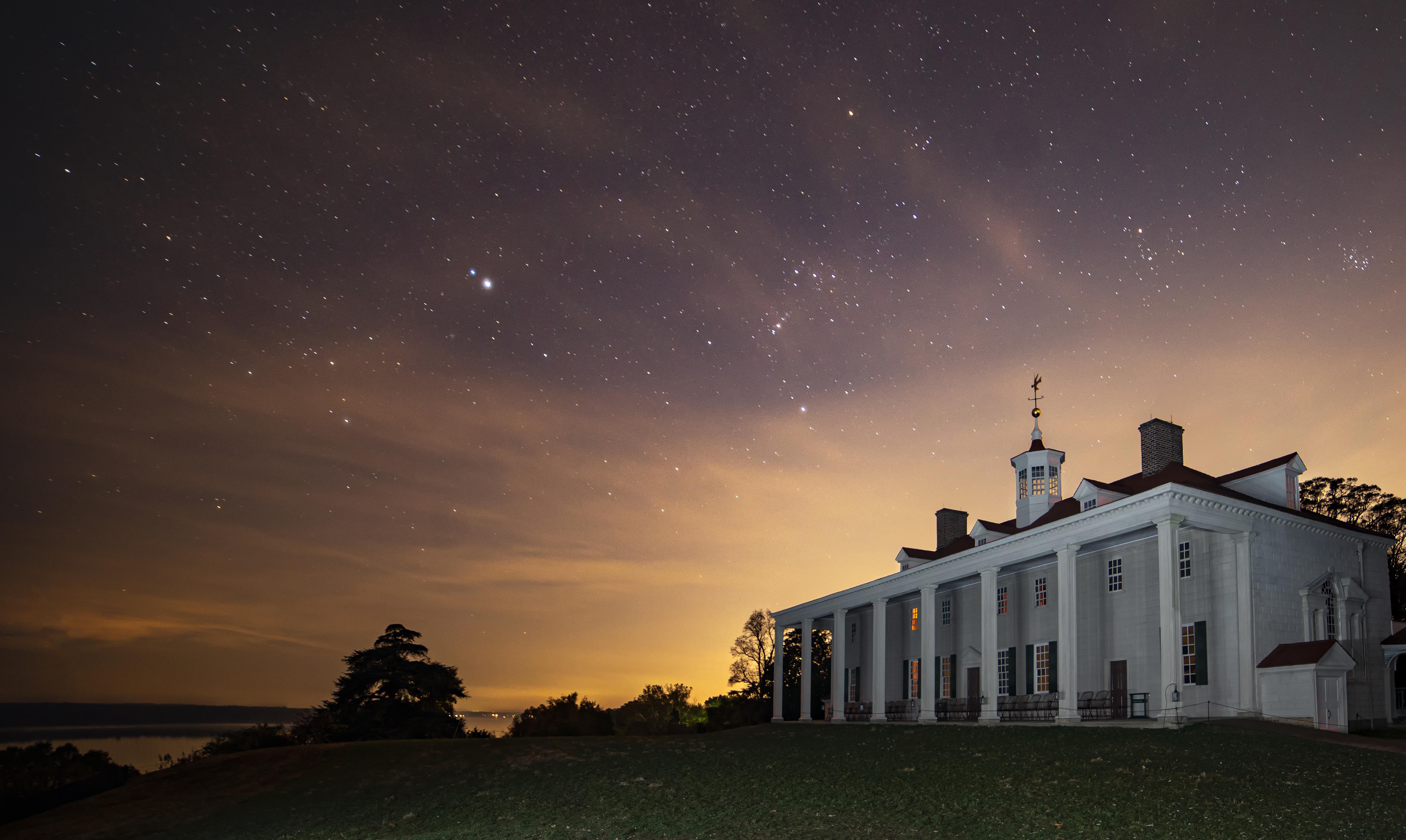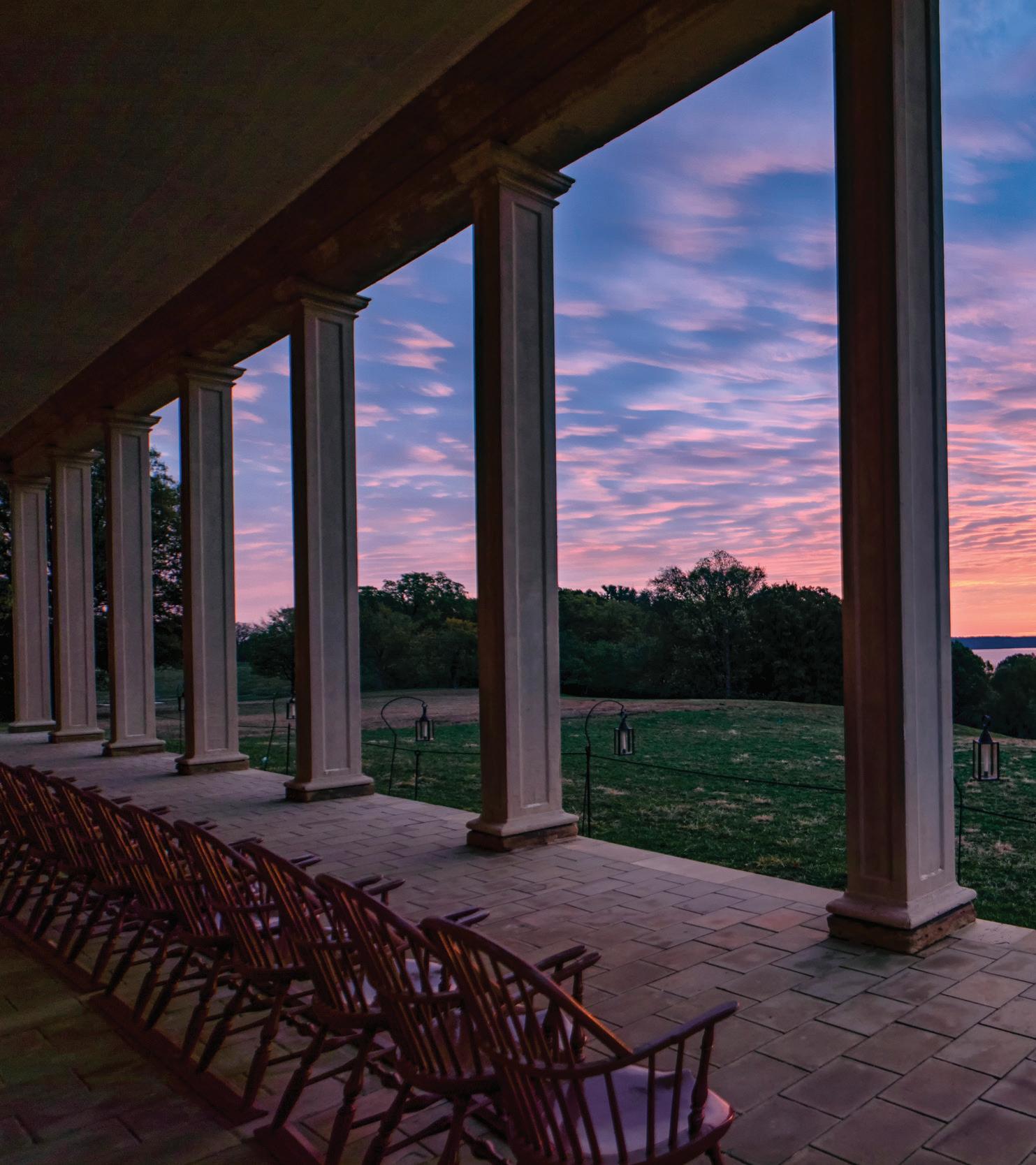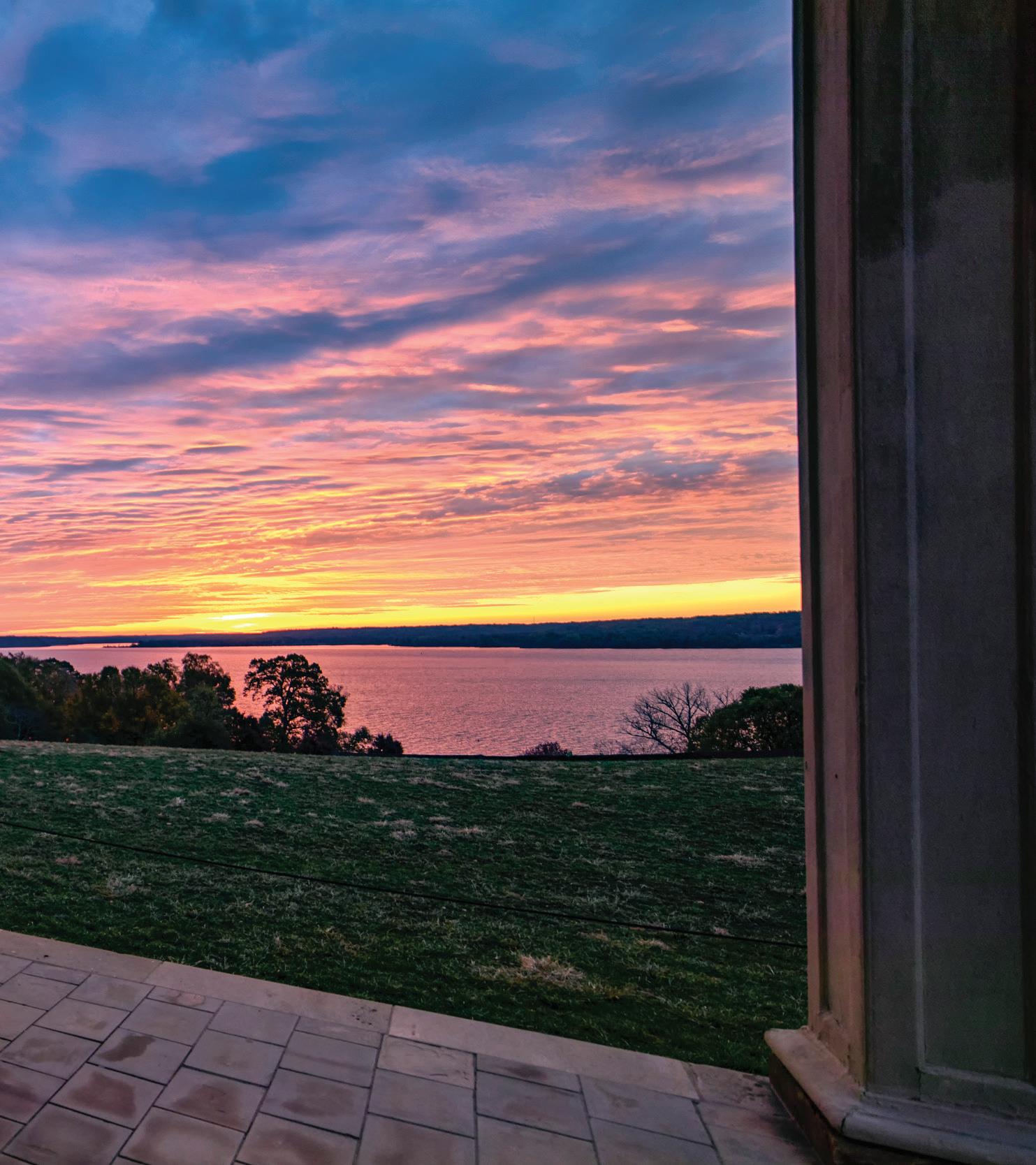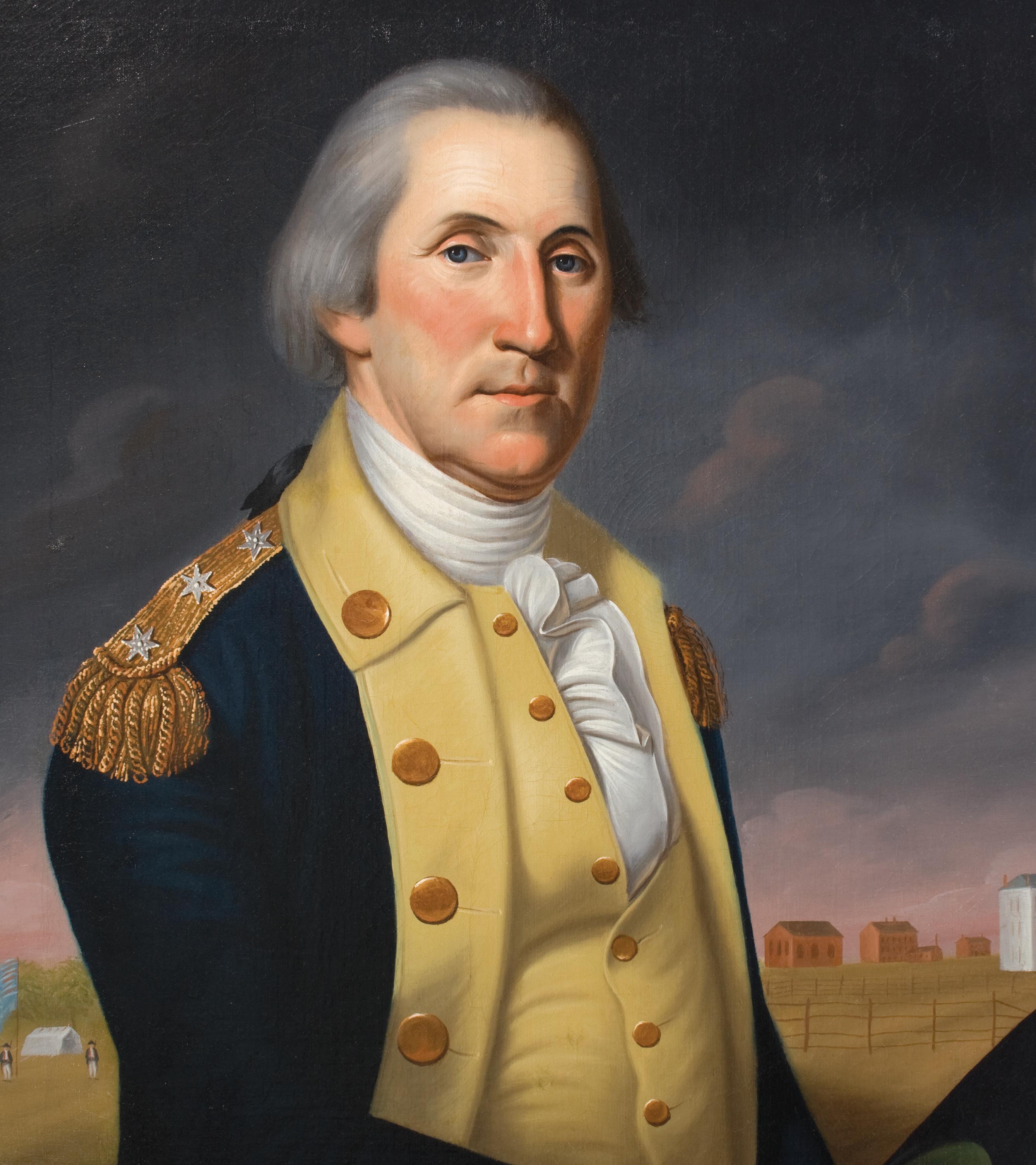

Editorial Brand Guidelines


Why an Editorial Style Guide?
Preserving a Legacy
An editorial style guide is crucial for maintaining a consistent brand identity. It ensures uniformity in the tone and quality of materials, building brand recognition and trust across all media and platforms. Additionally, the guide provides clear content creation guidelines aligned with the organization’s values and goals. This document outlines the editorial standards and best practices.

Names and Titles
COMMANDER IN CHIEF
Lowercased and no hyphens.
George Washington was the first commander in chief
FOUNDING FATHER(S)
Use uppercase Founding Father when referring to George Washington and using the term as a substitute for his name for variety. Lowercase founding fathers.
FATHER OF OUR COUNTRY
Use lowercase for “father/mother,” “our,” and “country” in common text uses. Use capitalization for marketing or event-specific copy. NOTE that the original honorific is “Father of His Country.”
George Washington, the father of our country, lived at Mount Vernon. Celebrate Father’s Day with the Father of Our Country.
FIRST VS. LAST NAME
Last names or first and last names should be used for Vice Regents, authors, and scholars. First names are only acceptable for staff and in informal communications.
GENERAL
Capitalize the General when using as a substitute for George Washington. Other usage should be lowercase.
Later that month, the General arrived in New York City. Washington addressed the general.
GEORGE WASHINGTON
Use the full name on first mention; use Washington for subsequent mentions (or another term, such as “the General,” “the former president,” etc.). An exception is made for extended texts in which the full name can occasionally be repeated for variety. When referring to an actor portraying a historic figure in running text, put the name in quotes in formal mentions, such as in donor event summaries. Quotes are not required in promotional copy.
George Washington was the first president of the United States. It is a little-known fact that Washington was an innovative farmer.
MARTHA WASHINGTON
Use the full name on first mention; use Mrs. Washington or Lady Washington for subsequent mentions. An exception is made for extended texts in which the full name can occasionally be repeated for variety. When referring to an actor portraying a historic figure in running text, put the name in quotes. Quotes are not required in promotional copy.
Join Martha Washington for a toast on the piazza.
MILITARY TITLES
Do not abbreviate military ranks when referring to the Revolutionary War. Modern military ranks may be abbreviated according to the Chicago Manual of Style.
MOUNT VERNON
The institution’s official name is George Washington’s Mount Vernon. Mount Vernon may be used alone in subsequent mentions. Always spell out Mount Vernon. Do not abbreviate.
Do not use “George Washington’s Mount Vernon Estate & Gardens,” “Mount Vernon Estate & Gardens,” “Mount Vernon Estate, Museum, & Gardens,” or “Historic Mount Vernon.”
THE MOUNT VERNON LADIES’ ASSOCIATION
See Organizational Groups, Events, Products
NAMES
Use a comma before and after “Jr.” and “Sr.” but no comma with numbers such as III and IV.
Mr. John Doe, Jr., is the recipient of the George Washington Prize.
Mr. John Doe III is author of All the Presidents.
PRESIDENT
Uppercase only when preceding a name. Lowercase in all other instances.
During his two terms in office, President George Washington lived in New York and Philadelphia.
George Washington was the first president of the United States.
REGENT AND VICE REGENT
See Organizational Groups, Events, Products
SLAVE VS. ENSLAVED
When writing about slavery, the term “enslaved” or “enslaved person” is preferred over “slave.”
Slave may be used for variety and brevity but should remain lowercased.
TITLES
In lists, all speakers and other referenced individuals should be listed with full name first (followed by a comma), appropriate title (followed by a comma), and then the organization with which he or she is affiliated, as follows:
Leo Smith, executive director, National Capital Foundation
In text, titles should only be capitalized when appearing before a personal name. Lowercase all other titles.
Doug Bradburn is president and CEO of Mount Vernon.
Doug Bradburn, president, gave his permission for the event.
Chief Financial Officer Phil Manno presented at the conference.
The senator from Virginia, Mark Warner, visited the estate during Christmas at Mount Vernon.
The Marquis de Lafayette was a close friend of George Washington.
The marquis’s son lived at Mount Vernon for some time.
NOTE: Mount Vernon’s vice presidents are “vice president for operations, education, etc.”
The official title of the senior curator is the Robert H. Smith Senior Curator and Vice President for Collections. Executive directors and directors are “director of”.
Capitalize Mount Vernon’s department and committee names and task forces. When referring to a department or a group as a “team” or “staff” less formally, use lowercase.
The Finance Department worked with the Education Department on a project.
Join Mount Vernon’s Development Department and the Viewshed Committee for this special event.
The education team welcomed teachers to a reception in Ohio.
Executive Director of Historic Preservation and Collections.
WASHINGTON FAMILY
When writing about several members of the Washington family, it may be necessary to use first names and last names in order to avoid confusion. When possible, refrain from using “George” unless referring to Washington as a child or in select applications for marketing and PR purposes. In rare cases, “George” and “Martha” may be used alone, such as in extended text in which several members of the Washington family are mentioned—and including the surname repeatedly would interfere with readability.
George Washington’s older half-brother Lawrence lived at Mount Vernon.
Lawrence Washington’s death in 1752 helped pave the way for George Washington to become the owner of Mount Vernon.
The names of Martha Washington’s children and grandchildren should be given in full—nicknames appearing in parentheses after their first names—on initial mention, with nicknames used informally on subsequent mention. In longer texts, after several pages, it is usually worth repeating the full name with parenthesized nickname in order to avoid confusion.
Martha Washington’s two surviving children were John (Jacky) Parke Custis and Martha (Patsy) Parke Custis. Patsy died at age 17, and Jacky died when he was 26.
The youngest of Martha Washington’s grandchildren, Eleanor (Nelly) Parke Custis and George Washington (Washy) Parke Custis, grew up at Mount Vernon. Nelly Custis and her grandmother were quite close.
Organizational Groups, Events, and Products
AFFILIATED GROUPS
Capitalize the names of affiliated groups, using the following spellings and capitalizations.
The Life Guard Society of Mount Vernon
Subsequent mentions: the Life Guard Society, or the Life Guard
Neighborhood Friends of Mount Vernon
Subsequent mentions: Neighborhood Friends
Friends of Mount Vernon
The Connoisseur Society
Subsequent mentions: the Connoisseurs
The Founders, Washington Committee for Historic Mount Vernon
Subsequent mentions: the Founders
NOTE: “the” is not capitalized in running text.
APPS AND DIGITAL PRESENTATIONS
Italicize the official names of these assets.
Agent 711: Revolutionary Spy Adventure App (subsequent mentions: spy app)
Mount Vernon Explorer (subsequent mentions: Mount Vernon app)
Be Washington: It’s Your Turn to Lead (subsequent mentions: Be Washington) Now or Never, The Winter Patriots, A More Perfect Union
EVENTS
Invitations, whether printed or digital, to any and all events being held at Mount Vernon shall be issued without exception from the Mount Vernon Ladies’ Association. Additional wording may be added which reads “in concert with” or “and” if the event is being held in conjunction with the affiliated groups listed above or private groups such as the Spirit of Mount Vernon, a company, foundation, or other affinity group.
Events such as symposia, the George Washington Book Prize, Leadership events, lectures, and others must include the full name of the Mount Vernon Ladies’ Association. Capitalize the titles of featured events at Mount Vernon. Do not put event names in quotes.
Mount Vernon Celebrates Black History Month
George Washington’s Birthday Celebration
George Washington’s Birthday Weekend (when referring to President’s Day weekend)
George Washington’s Birthday (when referring to February 22)
Father’s Day Weekend
Colonial Market & Fair
Slave Memorial Commemoration Ceremony
Fall Harvest Family Days
Christmas at Mount Vernon
EXHIBITIONS
Italicize the names of exhibitions, paintings, statues, and other works of art, including Mount Vernon in Miniature.
The temporary exhibition, Hoecakes and Hospitality: Cooking with Martha Washington, opened in February 2012.
The painting Prayer at Valley Forge was displayed in the Donald W. Reynolds Museum and Education Center.
THE MOUNT VERNON LADIES’ ASSOCIATION
“The” in the Mount Vernon Ladies’ Association should always be lowercase unless appearing at the start of a sentence or if the name stands alone. Use the name “the Mount Vernon Ladies’ Association” on first mention; use “the Association” (capital A) for subsequent mentions. The acronym MVLA may also be used.
The Mount Vernon Ladies’ Association was mentioned in the news. The Association celebrated its 150th anniversary in 2010.
In addition, seasonal MVLA meetings are referred to as the Ladies’ Council or simply as Council. The proper way to address the full Council or a group of Vice Regents is “Dear Ladies.”
The Ladies’ Council meets twice a year, in the spring and fall. The Ladies will meet in Council next week.
Capitalize Regent and Vice Regent in all uses. Do not hyphenate Vice Regent.
MOUNT VERNON PROGRAMS
Capitalize the official names of Mount Vernon programs. These titles may appear in italics when added emphasis is called for.
Michelle Smith Lecture Series
George Washington Symposium
The Washington Library will host the George Washington Symposium this month.
Buildings, Areas, and Objects
DONALD W. REYNOLDS MUSEUM AND EDUCATION CENTER
Use the full building name on first mention. It is acceptable to use “the Museum” and “the Education Center” or “the Museum and Education Center” for subsequent mentions. It is not acceptable to use “Donald W. Reynolds Museum” and “Donald W. Reynolds Education Center” separately to describe a specific location.
The exhibition is on display in the Donald W. Reynolds Museum and Education Center. Guided groups gather in the lobby outside the Museum and Education Center.
ESTATE
Lowercase this word in all instances.
The estate will host Mount Vernon by Candlelight.
FARMS
Capitalize the names of the five major farms at Mount Vernon. They are known collectively as the Five Farms.
Mansion House Farm
Dogue Run Farm
Union Farm
Muddy Hole Farm
River Farm
FORD ORIENTATION CENTER
Use the full building name on first mention. Orientation Center is acceptable for subsequent mentions.
THE GEORGE WASHINGTON PRESIDENTIAL LIBRARY AT MOUNT VERNON
The name “the George Washington Presidential Library at Mount Vernon” is the official name of the collections and programs held within the Fred W. Smith National Library for the Study of George Washington building. The name of the Library may be abbreviated to “the George Washington Presidential Library” if the materials make it clear that the Library resides at Mount Vernon. It may be further abbreviated to “the Washington Library” after the first mention of the official name. You may use “the Library” for subsequent mentions.
FURNITURE
Use the words “furnishings” or “furniture” rather than “antiques.”
MANSION, ROOMS, AND FEATURES
Capitalize “Mansion” when used in text. Recently restored rooms that have taken on the name by which they were referred in Washington’s time are capitalized.
Most visitors say the Mansion is their favorite part of visiting the estate.
Visitors regularly enjoy the view from the piazza.
New research led to the extensive reinterpretation and restoration of the New Room.
Blue Room
butler’s pantry
Chintz Room
cupola
dining room
Front Parlor
kitchen
Lafayette bedchamber
little parlor
MOUNT VERNON INN COMPLEX
Mansion
New Room (capitalized, no quotes; GW’s term for the large dining room)
Old Chamber
piazza
servants’ hall
Small Room
west front
Yellow Room
This name is taken to include the Mount Vernon Inn Restaurant, the Food Court, and several of The Shops at Mount Vernon.
The event will be held in the Robert H. and Clarice Smith Auditorium, located in the Mount Vernon Inn Complex.
Visitors can enjoy elegant candlelit dinners at the Mount Vernon Inn Restaurant.
Visitors can have lunch at the Food Court.
The Shops at Mount Vernon feature an abundant array of keepsakes and presents.
OUTBUILDINGS AND OTHER ESTATE FEATURES
Lowercase the names of outbuildings and locations on the estate: the kitchen, clerk’s quarters, upper garden, west front, north lane, main gate, wharf, bowling green, etc. Capitalize Donald W. Reynolds Museum and Education Center, Ford Orientation Center, George Washington’s Distillery & Gristmill. The only exceptions are Old Tomb and Tomb, which are capitalized as shown here. See the following list of official names, terms, and usages.
Note capitalization and lowercasing in the following list.
Bastille key (capital B, lowercased “key”)
Be Washington: It’s Your Turn to Lead
blacksmith shop
blue-and-white Canton china (hyphenated)
note this term should only be used to refer to a specific pattern of blue-and-white Chinese export porcelain. For general reference to the Washingtons’ blue-and-white tablewares, the terms blue-and-white Chinese export porcelain or blue-and-white china are preferred.
botanical garden
bowling green
bowling green gate
coach house
coat of arms (not hyphenated)
Continental Army
Constitutional Convention
Ann Pamela Cunningham Administration Building (the APC)
deer park
downstairs bedchamber
dung repository
east lawn
Edward P. Eagles Theater
F. M. Kirby Foundation Gallery
Food Court
Ford Orientation Center (subsequent mentions:
Orientation Center)
forest trail
Front Parlor
fruit garden and nursery
gardener’s house
The General’s Store (note The)
greenhouse
greenhouse slave quarters
Grist Mill Park (three words)
guest services desk (in the Ford Orientation Center)
half-brother (hyphen)
ha-ha walls (hyphen)
hanging wood
Hands-on-History Center
Hearst Gate
historic area
Interpretive Center
John C. and Paula P. Evans Volunteer Center
Ladies’ Council (subsequent mentions: Council)
Ladies’ quarters
The Lady Washington Shop (note The)
Legacy Theater
lower garden
Mansion circle
Mount Vernon Inn Restaurant
Mount Vernon Inn Complex
Mount Vernon Trail
Mount Vernon Memorial Highway/Route 235
neoclassical (lowercased)
north lane
Old Tomb (capitalized)
overmantel
overseer’s quarters
paddock
Washington Farm
Purple Heart Gate
Purple Heart Memorial
Donald W. Reynolds Museum and Education Center
rococo (lowercased)
salt house
shoemaker’s shop
The Shops at Mount Vernon
16-sided treading barn
slave burial ground and memorials
slave cabin
Slave Memorial (referring to 1983 work)
slave quarters
Revolutionary War Theater
Robert H. and Clarice Smith Auditorium
Robert H. and Clarice Smith Theater
smokehouse
south lane
spinning room
stable
stove room
StudioEIS
note single-word treatment and capitalization
Texas Gate
Tomb (capitalized)
Tomb road (first word capitalized)
12-acre field
upper garden
Vaughan Lobby
viewshed
A Very Private Romance (movie)
George Washington’s Distillery & Gristmill
wash house
waterwheel (one word)
weathervane (one word)
We Fight to Be Free (movie)
wharf
wreath-laying ceremony (hyphenated)
Numbers and Dates
AGES
In running text, ages 10 and above should appear as numerals rather than being spelled out, except in cases when ages under 10 are joined with those 10 and above. In promotional and web copy, present age ranges with an en dash (Youth ages 6–11)
54 years old four- to eight-year-olds 7- to 10-year-olds
A 25-year-old
DATES
Spell out months, and use numerals for days and years. When using a number, do not add “st” or “nd,” etc.
The event was held on January 4, 2012. The event will be presented on April 1. On June 2, visitation to the estate was high. August 23–24
When referring to decades, do not use an apostrophe.
1780s (not 1780’s)
Spell out the days of the week in running text.
On Tuesday, April 17, representatives of the news media will visit the estate. The event will be presented on Thursday.
In most cases, use 18th century rather than 1700s. The latter may be used for variety. Hyphenate “18thcentury” only when it is being used as an adjective. Do not put the “th” in superscript. (note MS Word automatically changes the “th.” Go to Format>Font, and uncheck the superscript box.)
The 18th-century residents of Mount Vernon included more than 300 slaves. There were more than 300 slaves at Mount Vernon in the 18th century.
Use American (vs. European) dating style: April 14, 2012, not 14 April 2012. Include a comma both before and after the year when writing a date in the month-day-year style. Do not include a comma after the year or the month when omitting the date.
The ship sailed on October 6, 1999, for Southampton. The budget was approved in October 2012.
NUMBERS
In running text, numbers from one to nine should be spelled out in almost all cases. Exception: Numerals are always used with money, percentages, and millions.
There are six horses at Mount Vernon. We had approximately 1.1 million visitors last year. 2 percent
Numerals should in nearly all cases be used for 10 and above.
Mount Vernon is comprised of more than 400 acres. The attendance in 1993 was 937,791.
Always spell out the number when it begins a sentence.
Fourteen teachers participated in the program.
PERCENTAGES
Numerals should be used with percentages. Exception: When a percentage is used to begin a sentence,
Numbers and Dates
the number is always written out, no matter how high or low the number is, and should be followed by the word “percent”.
3 percent, 165 percent
Seventy-five percent of all visitors to Mount Vernon are women.
When a percentage is included in running text, the word “percent” is always used. Do not use the percent symbol (%):
More than 40 percent of Mount Vernon visitors dined at the Food Court today.
When listing multiple percentage figures in a sentence, the symbol is acceptable.
Approximately 30–40% of Mount Vernon visitors come from the Washington, D.C., metro area.
Use decimal points, not fractions, with percentages
8.5 percent (not 8½ percent)
PHONE NUMBERS
In official printed materials, use periods between the numeric sequences and abbreviate “extension.” Do not use dashes or parenthesis.
703.780.2000, ext. 304.
PRICES
Include “cents” with price points in lists when some items do not end in even dollar amounts. Do not use “cents” in running text.
Event admission is $50 for adults.
Concessions: Drinks $3.50
TIMES
Include hours and minutes only in lists, and when events do not occur on the hour. In running text, use lowercase letters and include periods with a.m. and p.m.
Ticket sales begin at 10 a.m., and the estate closes at 4:30 p.m. The guests toured the Mansion from 9:45 a.m. to 1 p.m.
The event took place from 9 to 10 a.m.
Formatting and General Usage
ADVISOR VS. ADVISER
Adviser is the preferred term.
COMMAS
In general, use commas to separate elements in a series, always placing a comma before the conjunction.
The Mount Vernon Inn serves food, drinks, and desserts.
DATA
Data, meaning information, should be used in the singular.
Do not capitalize M and V in the institution’s name in email addresses: tsmith@mountvernon.org
EMAIL SIGNATURES
Employees should set their signature to appear at the bottom of every email. Refer to the Visual Style Guide for specifics.
FUNDRAISING
Fundraising is to be used as one word, not hyphenated.
HISTORIC
Always write “a” historic event, not “an” historic event.
HYPHENS & DASHES
Use a hyphen (-) in compound words and to separate numbers that are not inclusive, such as social security numbers. Use an en dash (–) between words and digits indicating duration, such as hourly time, months or years or to indicate a number range that is ongoing. Leave no space on either side.
George Washington’s first career as a surveyor from 1747–1752 was brief but successful. Use an em dash (—) to indicate an abrupt change in thought or where a period is too strong and a comma is too weak. It is also used to set off an amplifying or explanatory element. Leave no space on either side.
This authoritative biography of the underappreciated founder —best known for saying, “Give me liberty, or give me death!”—restores him and his fellow Virginians to their seminal place in the story of American independence.
Refer to the Chicago Manual of Style or the Merriam-Webster Dictionary for guidance on hyphenation of specific compound words.
LOGO
The official George Washington’s Mount Vernon logo should be used in all materials along with the Mount Vernon Ladies’ Association seal. Any materials featuring other versions of the logo should be updated when reprinted. When space is limited to show both the Mount Vernon Ladies’ Association and George Washington’s Mount Vernon logos together, it is permissible to use the text-only version of the MVLA logo. See the Visual Brand Guidelines for full usage guidelines.
MORE THAN VS. OVER
Use “more than” when you are not referring to an exact figure and want to imply that the exact figure is larger than the figure you are using. Use “over” when referring to spatial relations.
We estimate that more than a million people visit Mount Vernon every year. The plane flew over the city.
MVLA NAME AND SEAL
The Mount Vernon Ladies’ Association name and seal shall appear prominently in all materials emanating from Mount Vernon, both print and digital. This includes internal and external communications, brochures, business cards, calendars, emails, invitations, maps, menus, presentations, programs, publications, receipts, retail products, stationery, tickets, websites, etc.
All Library communications will follow the policy on the use of the Mount Vernon Ladies’ Association name and seal.
NONPROFIT
Nonprofit should be used as one word, without a hyphen.
PERIODS/PUNCTUATION PLACEMENT
All periods ending a sentence should be followed by one space, not two. This is to be observed in all written correspondence and printed materials. A question mark or exclamation point should only be placed inside quotation marks, parentheses, or brackets when it is part of the quoted or parenthetical matter. Otherwise, all punctuation should appear outside quotation marks. Place punctuation outside a closing parenthesis if the information inside is not a full sentence (such as a fragment). (Punctuation should be placed inside a closing parenthesis if the material is a full sentence.)
PUBLICATIONS AND MEDIA OUTLETS
When listing media sources:
Television program names should appear in italics: PBS’s Sesame Street. Newspaper and magazine names should appear in italics: Washington Post, Time magazine When newspapers and periodicals are mentioned in text, an initial “the,” even if part of the official title, is lowercased and not italicized. Foreign language titles retain the article in the original language. Titles and subtitles of books are also italicized, with a colon between title and subtitle.
The story was published in the Washington Post Ron Chernow won a Pulitzer Prize for his book Washington: A Life.
RE-CREATED VS. RECREATE
Re-create is to create again. Recreate is to have fun.
REVOLUTIONARY WAR
Capitalized. Also acceptable: American War of Independence, American Revolution
STATE NAMES
State names should be spelled out in text when standing alone or following the name of a city.
The ads ran in North Carolina, Virginia, and Maryland. The visitor was from Orlando, Florida.
Include periods when abbreviating Washington, D.C., in text. The two-letter, no-period state abbreviations preferred by the U.S. Postal Service should always be used when a zip code follows.
Our mailing address is 134 Kilmore Avenue, Alexandria, VA 22121.
MAILING ADDRESSES & USE OF COMMAS
Commas are used to set off the individual elements in addresses or place-names that are run into the text. No comma appears between a street name and an abbreviation such as SW or before a postal code.
Proofs were sent to the author at 3001 State Avenue NW, Newington, VA 22079. Alexandria, Virginia, is not far from Mount Vernon. The delegation traveled to Paris, France, last January.
WEB
When referring to the internet and all other web-based items, observe the following:
• internet
• online (one word, no hyphen)
• website (one word, lowercased)
• web page (two words, lowercased)
• homepage (one word, lowercased)
WEBSITE
The Mount Vernon website should be included in all printed materials given out on the estate or via direct mail/advertising. Do not italicize the name of a website.
Remove the http://www. Use the following format (no underscoring): mountvernon.org
WIFI
Use wifi.
X-RAY
Use the lowercase x-ray.

